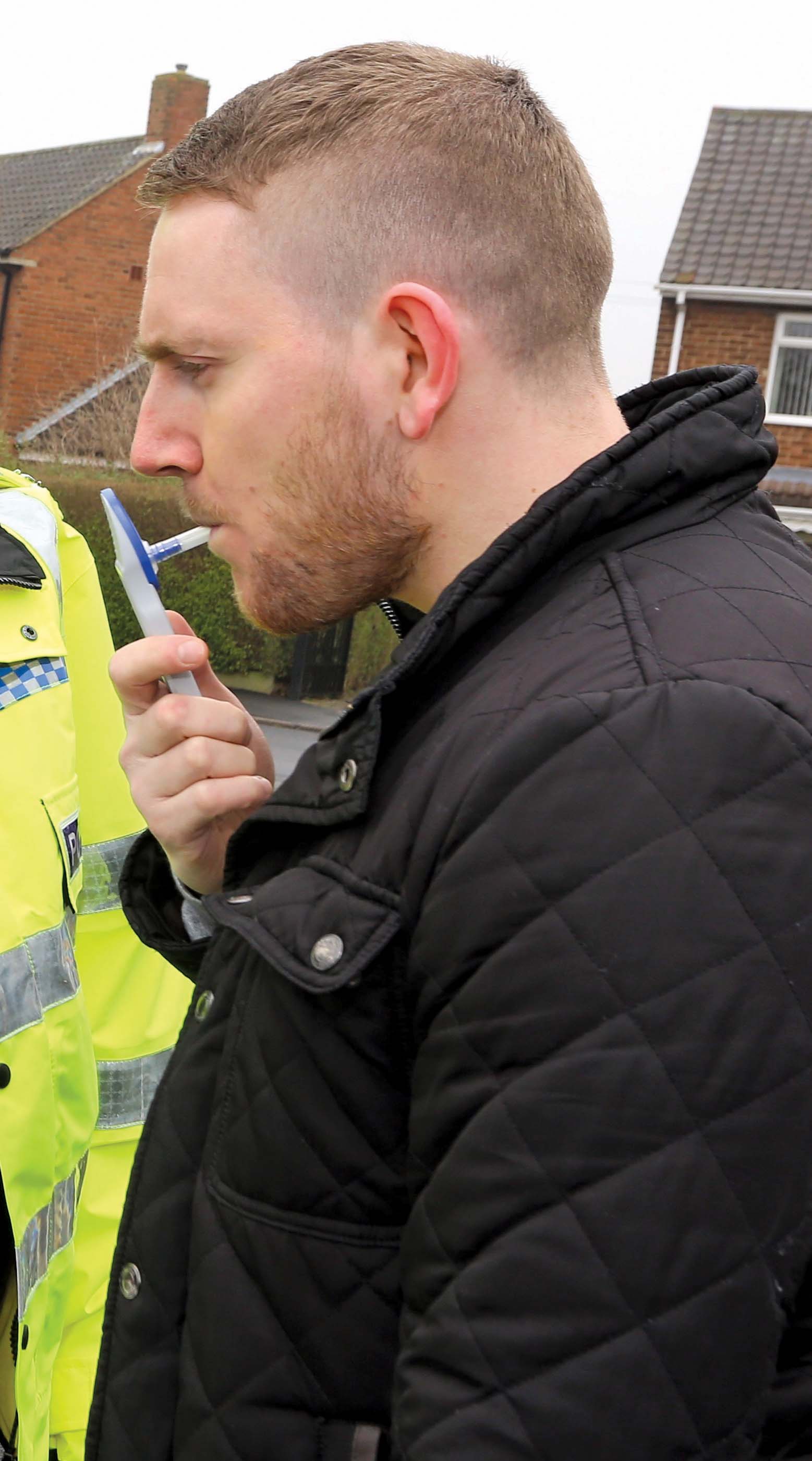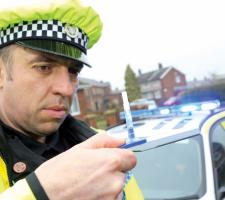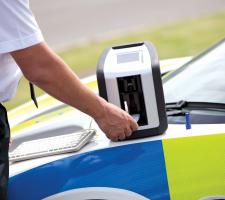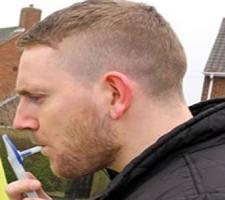
The type-approval of roadside drug testing equipment could bring about fundamental changes to the way police tackle the problem as Colin Sowman finds out.
It has been almost 50 years since the first drink-driving laws were introduced but the problem persists: the European Commission estimates that 25% of road fatalities in the EU are the result of alcohol consumption. Statistics from the UK show that 20% of drivers killed in road accidents in 2012 were over the blood alcohol limit for driving.
While drink-driving remains a problem, countries with long-standing legislation and creditable enforcement have seen decreases of between 25% and 50% [Swedler et al]. Now the authorities in many countries are turning their attention to another problem; that of drug-driving.
Again many countries have long-standing legislation prohibiting driving while under the influence of drugs, however in many cases these require the police to prove the driver’s abilities were impaired. Traditionally the roadside tests for drug use have been subjective with variations of asking the driver to walk in a straight line or to touch their nose with their forefinger while their eyes are closed - not exactly scientific. As the results of such ‘tests’ are subjective, transient and the interpretation is open to challenge, police officers are only likely to challenge and tests drivers who are obviously impaired by drug use. In addition, many do not allow random drug testing - restricting officers to testing only after an accident or incident. So for these and other reasons, there are far fewer statistics on drug-driving than drink-driving - but where they do exist they are quite damning.
Increased risk
Earlier this year the European traffic police organisation
In June, TISPOL combined its annual drink-drive enforcement operation across 28 European countries with drug testing. During the week-long operation 1,124,163 motorists were stopped and breath-tested resulting in 17,006 drink-drive offences. There were also 2,764 drugs-related offences detected but not every motorist was checked for drug-use and the actual number is not recorded.
In the absence of reliable and comparable statistics, the prevalence of drug-driving remains a matter for debate but there is evidence that this is a long-standing problem. For instance, of the almost 4,200 blood samples referred to the UK’s Forensic Science Service between 2004 and 2007 because the driver was suspected of being impaired following the use of drugs, almost 30% proved positive for tetrahydrocannabinol (THC) – effectively cannabis. A further 20% had two or more drugs and 10% had excess alcohol while an equal proportion were clean. The remaining 30% proving positive for a variety of illegal and prescription drugs.
Drug-driving
The EU’sIn America, 3.8% of respondents in a 2013 national survey on drug use admitted driving under the influence of illicit drugs (which includes the misuse of prescription drugs as well as marijuana and illegal drugs).
While initially this appears a far smaller problem than drink-driving, practical tests reveal a very different picture. The 2013-2014 National Roadside Survey by the US National Highway Traffic Safety Administration (NHTSA) found that more than 22% of drivers tested positive for illegal, prescription, or over-the-counter drugs. The incidents of drivers testing positive for illegal drugs increased at night corresponding to a decrease in those caught using prescription drugs. In the same operation 1.1% of drivers tested positive for alcohol during the daytime on weekdays, rising to 8.3% on weekend nights.
On that basis, drivers appear two and a half times more likely to drive under the influence of drugs than they are alcohol. This might appear an extreme conclusion but it is one echoed by German company Dräger. Its regional application manager (impairment), Mark Burrup, told delegates at a recent Health & Safety Expo in London that drug users were more likely to drive while under the influence than alcohol users.
Roadside testing
There may be historic reasons for such disparities, one of which is that for many years there has been a numerical limit on the level of alcohol a driver can have in their blood and approved equipment to test compliance at the roadside. Now, a growing number of countries are replacing impairment requirements with numerical limits for drugs in a driver’s blood and have approved (or are in the process of approving) equipment that allows roadside testing for drug drivers.
This makes the testing for drug use objective and reliable and as a result TISPOL’s general secretary, Ruth Purdie, says the police are far more likely to test drivers for drug use. She also believes the use of such equipment will drastically increase the number of prosecutions and show drug driving is far more prevalent than had previously been suspected.
It is not only illegal drugs that cause driver impairment, prescription medication can also cause problems. “Very often people do not read the information on the packaging or may not take the correct dose at the correct time – this to can also impair a driver’s ability,” says Purdie. While everybody knows individuals should not drive after taking drugs, Purdie says there is no evidence that education alone has worked or will work in the future. “What is needed,” she says, “are the three Es: engineering, education and enforcement. And reliable roadside drug testing equipment is now allowing that last ‘E’ to happen.”
Previously, many police forces have tried mechanised roadside drug testing but the reliability and repeatability has not been acceptable. With the introduction of reliable and type-approved drug testing equipment countries including Australia, Belgium and Germany have introduced, or are in the process of introducing, random roadside drug testing.
Because there is a relatively rapid decline of drugs such as THC, cocaine and heroin in blood, samples need to be taken as soon as possible following an incident.
While urine is fast and easy to collect there is a time‐lag between drug consumption and its appearance in urine.
This time‐lag may be affected by factors including gender, age and weight and it is generally accepted that urinary drug concentrations are not useful as an indicator of the effects of a drug on immediate driving safety.
Correlation
While some countries still specify a urine test, many are turning to testing oral fluids which have been shown to give a superior correlation with blood drug levels and driving behaviour. Saliva is also easy, quick and non‐intrusive to sample at the roadside using a mouth swab.Dräger manufactures one of two roadside drugs testers type-approved by the UK authorities to police new drug-driving legislation which came into effect in March 2015.
The regulations effectively set a zero threshold for cannabis, cocaine, MDMA (ecstasy), LSD, ketamine, heroin and methylamphetamine. Higher limits have been set for medicinal drugs with limits based on the available evidence of the road safety risk.
In the case of Dräger’s device, the officers can test for amphetamines, opiates (heroin/morphine), cocaine and metabolites, benzodiazepines and cannabinoids. A subsequent blood test, usually carried out at the police station, is required if evidence is needed for a prosecution.
Is it working?
TISPOL’s working group cite surveys from Victoria, in Australia (where random roadside testing was introduced in 2004) showing that a third of illicit drug users stated that the drug tests have influenced them, primarily to avoid taking drugs when they are going to drive.Earlier this year the UK’s Institute of Advanced Motorists obtained information showing London’s police had made 214 drug-driving arrests in the two months following the introduction of roadside drug testing. Across the UK some 900 drug drivers were arrested over the same period. Those caught driving while under the influence face the prospect of up to six months in prison, a £5,000 fine and a minimum 12 months disqualification from driving.
In a few countries drug-driving is a civil offence while in most it is criminal – especially if an accident is involved. Now, with the advent of reliable and type-approved roadside drug testing equipment, authorities have the means to clamp down on drug drivers.















